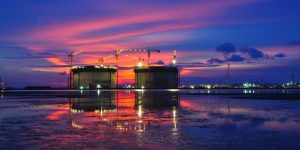The staff of the Federal Energy Regulatory Commission (FERC) has prepared a draft environmental impact statement (EIS) to assess the impacts of constructing and operating the Alaska LNG Project proposed by the Alaska Gasline Development Corporation (AGDC). FERC said the project would result in some significant environmental impacts that would remain even after mitigation measures were implemented.
The purpose of the project is to commercialise the natural gas resources of Alaska’s North Slope, by converting the existing natural gas supply to LNG for export and providing gas for users within the State of Alaska.
AGDC is seeking authorisation to construct, own, and operate a new Gas Treatment Plant; a 1.0-mile-long, 60-inch-diameter Prudhoe Bay Unit Gas Transmission Line; a 62.5-mile-long, 32-inch-diameter Point Thomson Unit Gas Transmission Line; a 806.6-mile-long, 42-inch-diameter natural gas pipeline (Mainline Pipeline) and associated aboveground facilities, including eight compressor stations and a heater station; and a 20-million-metric-ton per annum liquefaction facility, including an LNG Plant and Marine Terminal.
The Gas Treatment Facilities (Gas Treatment Plant, Prudhoe Bay Unit Gas Transmission Line, and Point Thomson Unit Gas Transmission Line) would be on state land designated for oil and natural gas development within the North Slope Borough.
The project would have an annual average inlet design capacity of up to 3.7 billion standard cubic feet per day and a peak capacity of 3.9 billion standard cubic feet per day.
“We conclude that project construction and operation would result in temporary, long-term, and permanent impacts on the environment,” said FERC. “Most impacts would not be significant or would be reduced to less than significant levels with the implementation of proposed or recommended avoidance, minimisation, and mitigation measures, but some impacts would be adverse and significant.”
FERC concluded that constructing the project would have significant impacts on permafrost due to granular fill placement, particularly for the Mainline Pipeline facilities. It would have significant adverse impacts on wetlands from granular fill placement resulting in substantial conversions of wetlands to uplands. Significant adverse impacts on forest would result from permanent losses or conversions from installation of aboveground facilities, granular fill placement, and vegetation maintenance in the Mainline Pipeline right-of-way.
It stated that operational noise at the two nearest noise sensitive areas would likely double due to facility operation, which would be considered a significant increase.
Project construction and operation is likely to adversely affect six federally listed species (spectacled eider, polar bear, bearded seal, Cook Inlet beluga whale, humpback whale, and ringed seal) and designated critical habitat for two species (polar bear and Cook Inlet beluga whale).
“With the issuance of the draft EIS, we are requesting to initiate formal consultation with the U.S. Fish and Wildlife Service and National Marine Fisheries Service regarding Project effects on federally listed species,” said FERC.
Because the project would result in substantial impacts on permafrost, wetlands, forest, and caribou (Central Arctic Herds), and since other current or reasonably foreseeable projects in the study area would similarly affect these resources, we found that cumulative impacts on these resources would or could be significant. Visual effects from the project near the DNPP would be high, so any additional effects in this area from other projects would contribute to cumulative visual impacts, which could also be significant.
“In addition, we recommend that the project-specific impact avoidance, minimisation, and mitigation measures that we have developed (included in the draft EIS as recommendations) be attached as conditions to any authorisation issued by the Commission for the project,” said the FERC statement.
For more information visit www.ferc.gov















